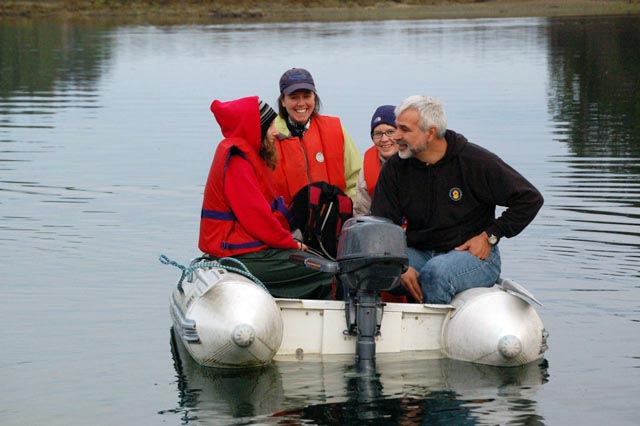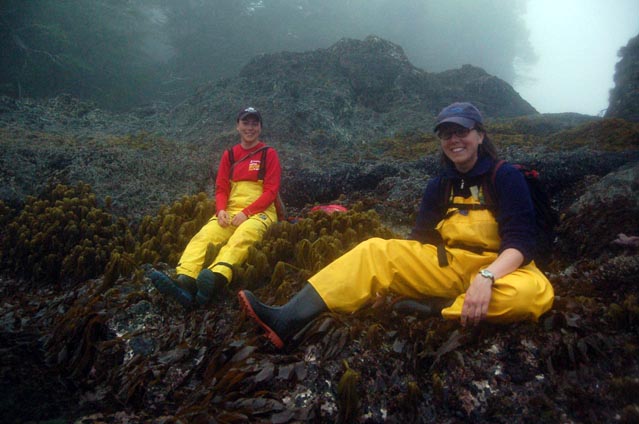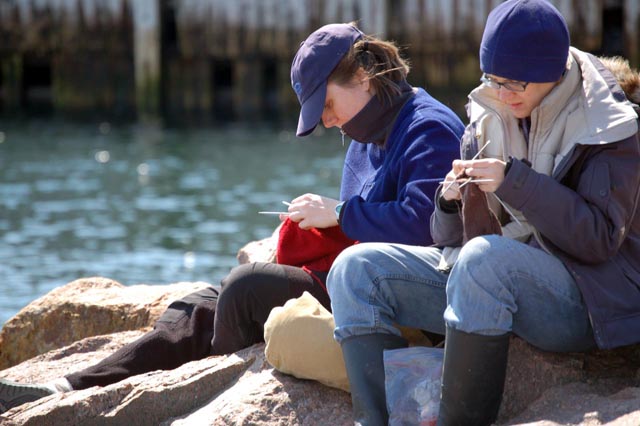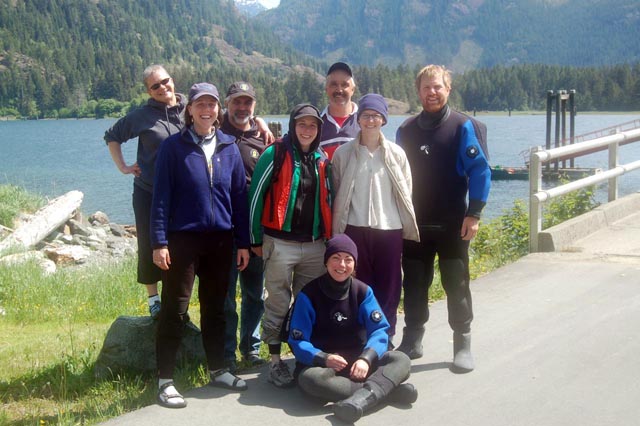Hana Kucera
PhD Student
« Return to Home Page «« Return to Lab Members
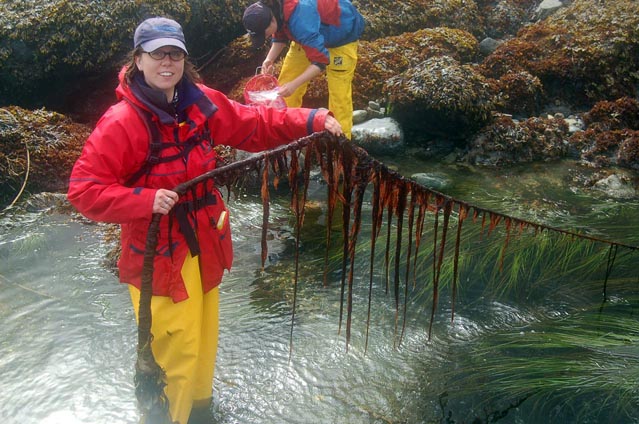 |
Hana KuceraPhD Student After successful defense of my PhD in July 2010, I moved on to become an instructor at the Bamfield Marine Sciences Centre. At BMSC, I teach Directed Studies, an undergraduate course in which students design, carry out, write up and present independent research projects. Juggling over 20 student projects at once can be challenging but being a part of student discovery and scientific growth is a tremendous reward. I also teach middle, secondary and post-secondary students who visit BMSC as part of the Public Education Program. Students visit the |
||||
centre for a short time and are immersed in hands-on experiential learning. In working with them, I am reminded each day about the wonder of science and the marine environment. My work allows me to continue to expand my knowledge of marine science and diversify into fields such as oceanography and marine mammal biology. In the research realm, I have kept one toe in phycology by collaborating with researchers at BMSC and Simon Fraser University to monitor radiation levels of seaweeds. Publications Kucera, H. & G.W. Saunders (in review) A floristic survey of Canadian Bangiales (Rhodophyta) based on multiple molecular markers reveals cryptic diversity. Hana's pre-graduation write-up: During my undergraduate, I got my start in research studying nematodes in the lab of Dr. Jay Burr. We spent a summer looking for a light response in Caenorhabditis elegans by filming their behavior in response to light stimulus. The next summer I spent traveling the deserts of the southwest USA as a field assistant for Jeff Joy, investigating the phylogeography of gall-forming midge flies. The following two years, my interest in evolution and research in general grew while I was a member of the FAB*lab, under the tutelage of Arne Mooers and Bernie Crespi. I went back to Bamfield to take the seaweed course in summer of 2003, where I met Gary who invited me to come do graduate studies in New Brunswick. I have a strong interest in teaching and during my time here at UNB, I've taken on a few other projects. I started up the UNB chapter of the Let's Talk Science Partnership Program, which sends graduate student volunteers to schools throughout New Brunswick to present exciting hands-on science activities. We've visited schools as far away as Bathurst and Belledune, and also presented many activities at local schools such as Leo Hayes High School. I coordinated the program for four years, and I am now an active volunteer. In the summer of 2007, I spent one month teaching a course on freshwater aquatic habitats and species-at-risk at the St. Mary's First Nation in Fredericton. I also had the opportunity to develop my university level teaching skills during the winter 2009 semester when I taught BIOL 1622, a first year undergraduate course in Biology for non-majors. The course is called, "Microbes, the good, the bad and the ugly” and I focused on how microbes affect everyday human life. We covered topics such as colds and flus, food spoilage, as well as how microbes are used to produce food and clean up wastes. I found it rewarding to be able to connect non-scientists with biology that was relevant to them. Research Interests My work in the genus Fucus has been published in the journal Botany (see below for reference and link) and I have shown that cox1 DNA barcoding works as well as any other marker to distinguish Fucus species and have clarified some confusion over the identity of certain Fucus morphologies. In the Rhodophyta, the genus Porphyra consists of simple blades which all have the same general morphology and anatomy and distinguishing features of reproductive anatomy are not always present or reliable. I employed the cox1 DNA barcode marker, as well as the rbcL and universal plastid amplicon, in a broad floristic survey that revealed cryptic diversity within the genus. The green algal genus Ulva consists of simple tubes or blades that are often differentiated by chloroplast morphology or number of cell layers, though these characters have been shown to be inappropriate for species designation in light of molecular results. My work shows that cox1 is not a suitable marker for DNA barcoding of green algae and I have developed and tested alternative markers. I use broad sampling of green algae to ensure wide utility. My work on the DNA barcoding of taxonomically difficult algal genera facilitates a testing of the wider applicability of cox1 and other markers for species assignments, provides a deeper understanding of species diversity in each of the three genera, and has led to the discovery of new species in the Canadian flora. |
|||||
|
|||||
